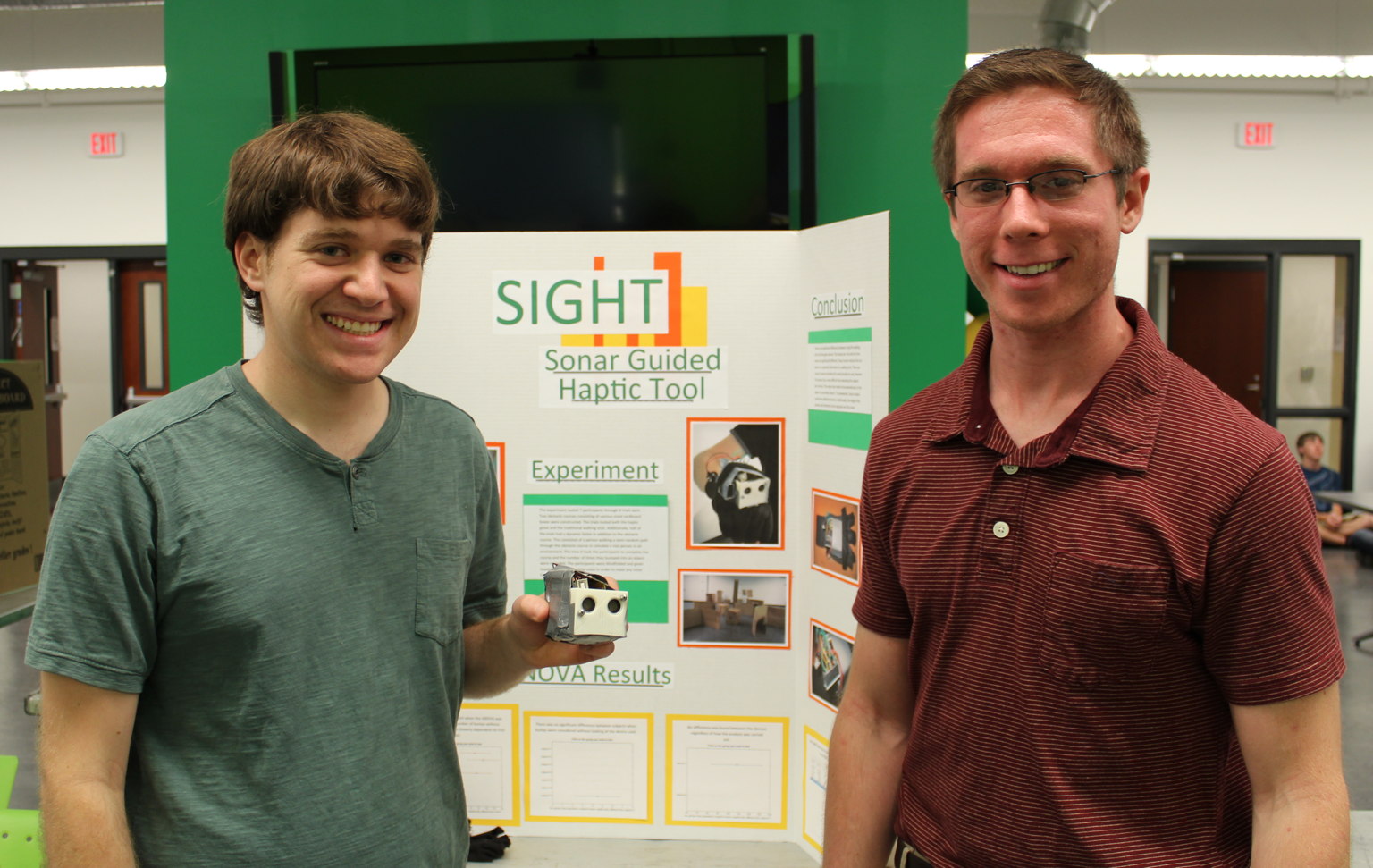Here are a few photos taken during the Haptics Class Project Demonstrations on April 27, 2012.
<Prev 1 | 2 | 3 | 4 | 5 | 6 | 7 | 8 | 9 | 10 | 11 | 12 | 13 | 14 | 15 | 16 | 17 | 18 | 19 | 20 | 21 | 22 | 23 | 24 | 25 | 26 Next>
Navigation Using a Haptic Hand-Mounted Device For the Visually Impaired For those with no or limited sense of sight, navigating through the world can be a challenge. The visually impaired must rely on senses other than sight such as hearing and touch to guide them. The walking cane has been the traditional navigational tool for the bind, but it offers only a limited sense of the environment that is focused mainly on protecting the legs and feet, and does not indicate when the person is approaching a hanging object. The motivation is to replace the walking stick with something that can detect objects in the immediate vicinity of the person. A sonar sensing modality will be used to gather information about the environment, and then feedback will be delivered to the user by varying vibration stimuli. The vibrotactors are mounted on a glove to allow the user to point the device in any direction. This has the advantage of having as many degrees of freedom as the hand and requires fewer actuators and sensors compared to a head-mounted display. The efficacy of the device and how humans respond to vibrotactile feedback to navigate through a complex environment will be evaluated by having a series of blindfolded subjects try to navigate a course filled with various obstacles. Trials were completed with both the glove and the walking stick and a dynamic environment was introduced in half of the trials. Results show that the glove does not perform up to the standard of the walking stick but may be improved with future work. More information can be seen here.
| 



